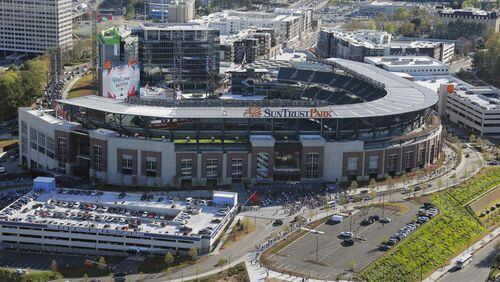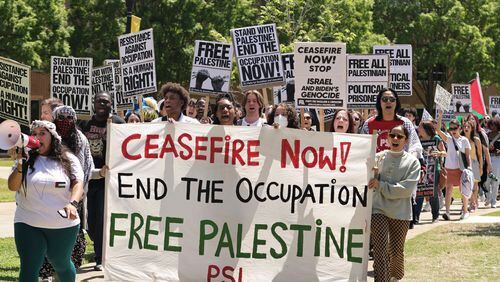Now that it has been a few months since the spring opening of SunTrust Park, Cobb County residents, Braves fans and metro Atlanta commuters have had time to assess the behemoth that was once undeveloped land. Besides the baseball field, The Battery Atlanta offers 1.5 million square feet of mixed-used development at the intersection of I-285 and I-75. There is now a 4,000-seat music venue called the Coca-Cola Roxy.
Although there are areas yet to be developed in The Battery Atlanta, the county has brought in a few million dollars in sales and property tax already from the Braves’ investment of $372 million and $300 million from the county and the Cumberland Community Improvement District to build SunTrust Park. In annual property taxes alone, $3 million in revenues for the school system, $489,000 to the county fire fund and $1.2 million towards county government operations are expected each year, according to the CobbCounty.org website. No millage rate increases are proposed for Cobb residents.
But perhaps the biggest test for many is the traffic.
A 7:35 p.m. start time for weekday night games was supposed to help alleviate the horrendous traffic in metro Atlanta. With fans coming from all over, bad traffic in Cobb can affect Fulton, Gwinnett, DeKalb and everywhere else. Even though there are some public transportation options: MARTA bus connections and CobbLinc routes, it doesn’t have the level of public transportation options compared to Turner Field. But has that made a difference?
So far, does SunTrust Park/The Battery Atlanta hit a home run, strike out or fall somewhere in between?
Send comments to communitynews@ajc.com. Responses may be published in print or other formats and may be edited for length and/or clarity.
LAST WEEK: IS CLOSING PEACHTREE-PINE A GOOD SOLUTION FOR HOMELESSNESS IN ATLANTA?
The city of Atlanta and The United Way have pledged more than $50 million toward alleviating homelessness in the downtown area. Subsequently, the largest shelter, Peachtree Pine will be closed next month. We asked readers if this plan looks like it will work.
Here’s what some had to say:
From my standpoint as a resident and a community leader in my East Lake neighborhood, there is very little information offered about what is to happen to make better the lives of those confronted by this change or how it will affect city neighborhoods. I am sure there is a plan. Could (the city) come to our neighborhood meetings and lay out their ideas and expectations for success? My fear is that the city is decentralizing the problem to make it less visible just down the street from city hall. I am also very concerned that neighborhoods are deliberately being kept out of the conversation so that the city leadership does not have to suffer the certain NIMBY (Not in my back yard) outrage that will always come with an announcement that a new homeless shelter is heading to a street near you. Oh, and that building on Pine Street may have attracted the attention of some powerful developers now that our economy is improving. To be fair, the stories I have heard about Pine Street Shelter are awful. I have said for years that if you are a lost dog in some parts of this city, you will find a hot meal, bath, medical care, a warm place to sleep, and someone on Facebook to find you a permanent, loving home. If you are a lost human, you will find Fulton or DeKalb county jails waiting for you, or possibly even worse, the nightmare on Pine Street. So, what's the plan to make that better? —Kyle Caldwell President, 2017, East Lake Neighbors Community Association Founder, President, Neighbor in Need Inc.
Almost 99 percent of the occupants in this building are African-Americans, therein lies the problem! Racism is alive and well in Atlanta even though we've had a black government for many years. Many of the people who occupied that space has never really had a home in this country. For 246 yeas our ancestors were slaves, then another 100 years on plantations as sharecroppers. Then forced off the the plantation with the coming of automation in farming into the urban ghettos and public housing. When the African Americans moved into Atlanta "white flight" became the reality. . Atlanta is a prime example of a city with black political leaders without real power. The population of Fulton County is now majority white and "black removal" is in full force! Another 500-plus from the shelter. — Joe Beasley, vice-chair of the Task Force for the homeless.
Then the King will say to those on his right, 'Come, you who are blessed by my Father, inherit the kingdom prepared for you from the foundation of the world. For I was hungry and you gave me food, I was thirsty and you gave me drink, I was a stranger and you welcomed me, I was naked and you clothed me, I was sick and you visited me, I was in prison and you came to me.' Then the righteous will answer him, saying, 'Lord, when did we see you hungry and feed you, or thirsty and give you drink? And when did we see you a stranger and welcome you, or naked and clothe you? — Matthew 25:34-40
Does this plan involve busing them to New York or something like that? — IJS
Pamela Miller for the AJC
About the Author






